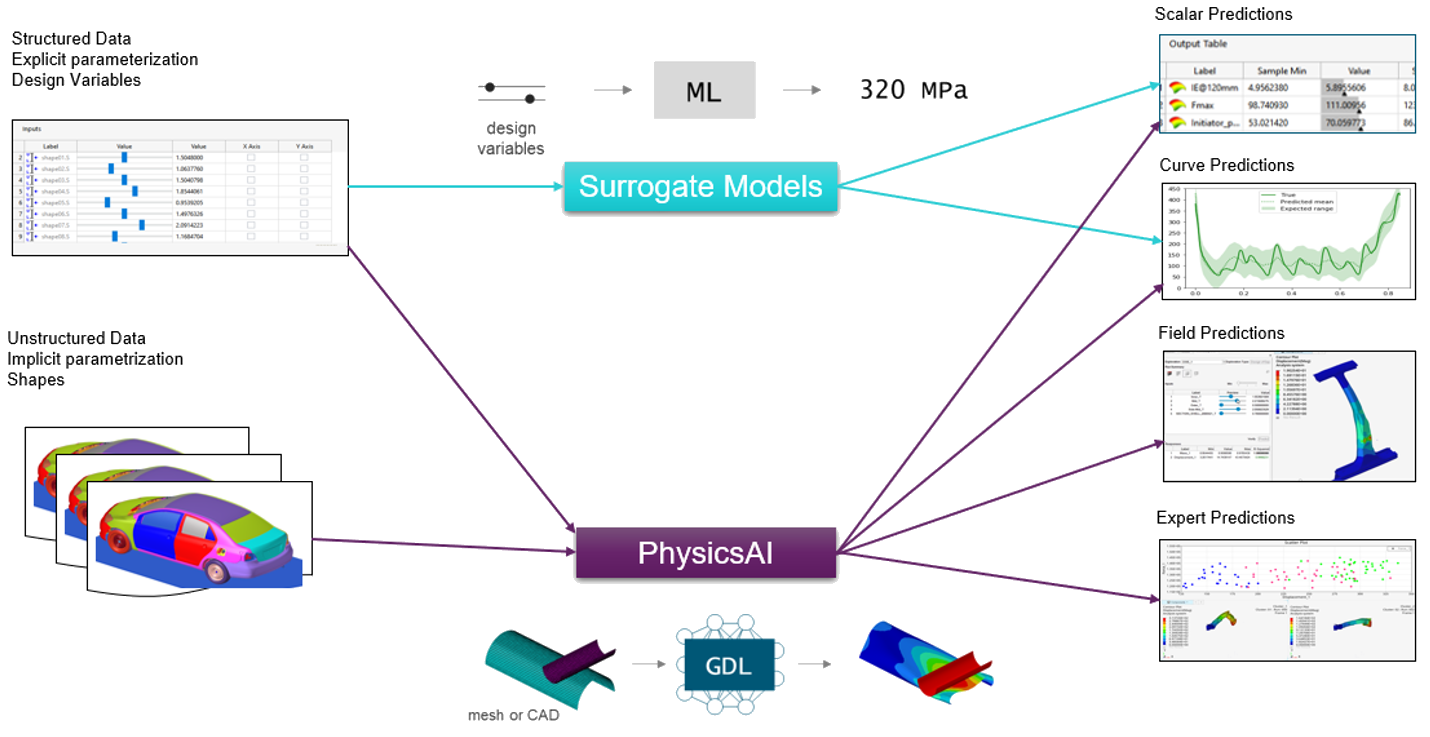PhysicsAI
Use PhysicsAI to build fast predictive models from CAE data. PhysicsAI can be trained on data with any physics or remeshing and without design variables.
PhysicsAI delivers fast physics predictions on new designs. The PhysicsAI Geometric Deep Learning engine can utilize past simulation data to build an AI model capable of evaluating new designs. PhysicsAI offers a simplified experience to enable the use of AI in CAE without extensive understanding of data science. You can use the GUI to create datasets, train and test AI models, and make predictions on new designs and CAD models.
How PhysicsAI Differs From Traditional Surrogate Models
Traditional surrogate models work by perturbing explicitly defined design variables and fitting regression equations. These models are typically limited in terms of their outputs to a single value (scalar) or a collection of values (vector) data. Full 3D field results are usually not produced by these methods. Additionally, the variation in geometries is typically limited to minor differences such as thickness, length, and shape morphing variables and requires the generation of new data via finite element simulations. Data with additional variables, features, or topologies cannot be utilized, which restricts the prediction space of these surrogate models.
In comparison, PhysicsAI allows the utilization of a broader set of inputs (geometric and non-geometric (thickness, materials, boundary conditions, loads, and so on)) and outputs (full 3D field results, scalar and vector key point indicators, and curves). The Geometric Deep Learning engine is capable of processing different topologies, shapes, and features without user defined parameters, which makes the utilization of past data possible.
